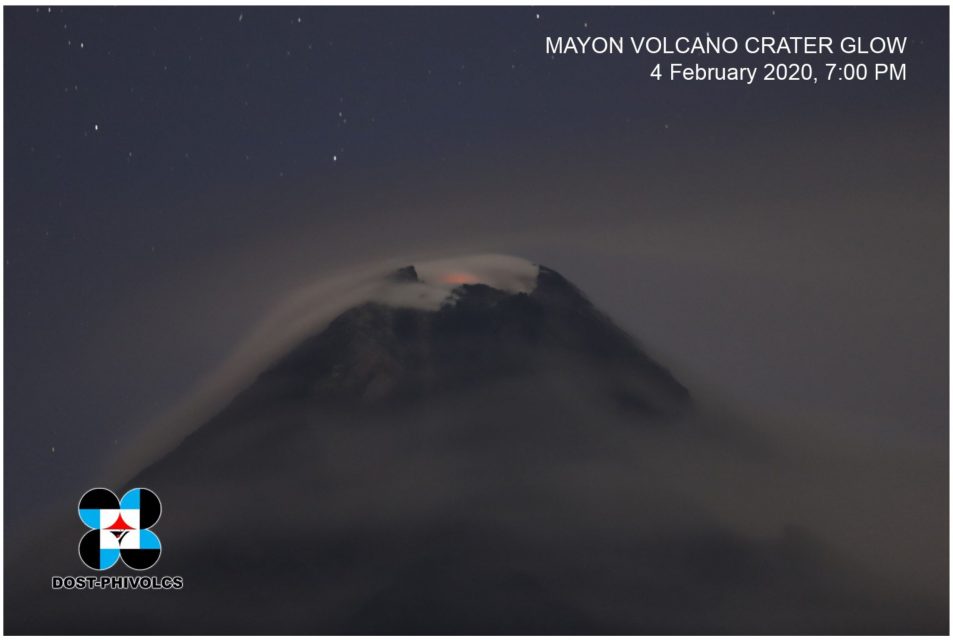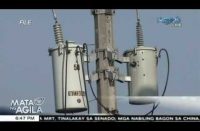
(Eagle News) – Alert level 2 continues to prevail on Thursday morning, Feb. 6, over Mayon Volcano where a crater glow had been observed at its summit on Tuesday night, according to the Philippine Institute of Volcanology and Seismology (PHIVOLCS)
PHIVOLCS said that there was a “slight deflation to the edifice” relative to previous measurements of July 2019, which could mean that there is already magma “beneath the edifice.”
“Continuous GPS data also showed inflation of the edifice since February 2019,” its 8 a.m. bulletin on Thursday said.
But PHIVOLCS said that the “Mayon Volcano’s seismic monitoring network did not detect any volcanic earthquake during the 24-hour observation.”
“Alert Level 2 currently prevails over Mayon Volcano. This means that Mayon is at a moderate level of unrest,” the PHIVOLCS bulletin said.
“PHIVOLCS reminds the public that sudden explosions, lava collapses, pyroclastic density currents or PDCs and ashfall can still occur and threaten areas in the upper to middle slopes of Mayon,” it said.
It said that “entry into the six kilometer-radius Permanent Danger Zone or PDZ and a precautionary seven kilometer-radius Extended Danger Zone or EDZ in the south-southwest to east-northeast sector, stretching from Anoling, Camalig to Sta. Misericordia, Sto. Domingo must be strictly prohibited.”
PHIVOLCS advised the people residing close to these danger areas “to observe precautions associated with rockfalls, PDCs, and ashfall.”
“Active stream/river channels and those identified as perennially lahar-prone areas on all sectors of the volcano should also be avoided especially during extreme weather conditions when there is heavy and prolonged rainfall,” it said.
“Civil aviation authorities must advise pilots to avoid flying close to the volcano’s summit as airborne ash and ballistic fragments from sudden explosions and PDCs may pose hazards to aircraft,” PHIVOLCS added.
Earlier, in a Feb. 5 bulletin issued at 4 p.m., PHIVOLCS said that in the past two days, a “crater glow has been detected at the summit crater that is likely caused by hot magmatic gases heating the overlying atmosphere.”
“This suggests the possibility that remnant magma may be quietly rising to the shallow levels of the edifice.”
“Since the end of magmatic eruption in March 2018, Mayon Volcano has exhibited declining earthquake activity and SO2 emission; however, a slight swelling or inflation of the edifice began in February 2019 based on continuous GPS and electronic tilt monitoring. These observations indicate that Mayon’s recent behavior has been mainly driven by changes occurring within magma already emplaced beneath the edifice rather than by renewed magma intrusion events,” PHIVOLCS explained.







